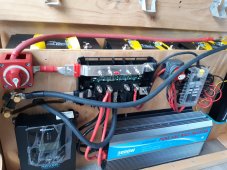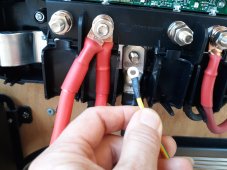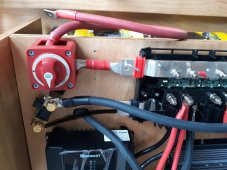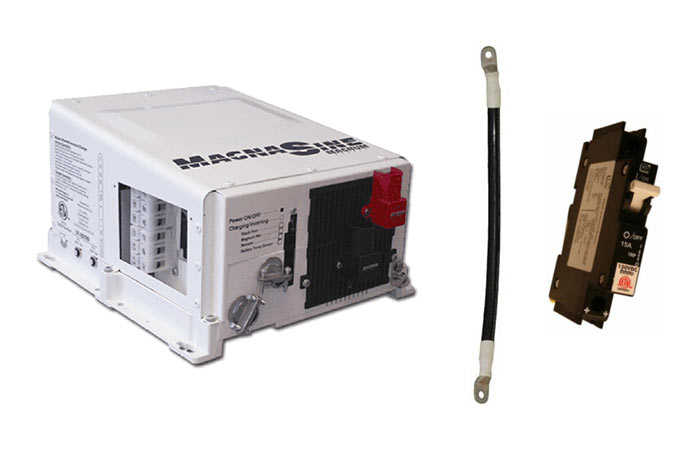10/8/22
I have two questions…
The first is: how critical is the rule that the battery cable needs to be the same length? I have my neg cable going from the far right to the far left to the Victron Energy Sensor bus bar, then from there to the Lynx distributor. (I drew this wire in on the photos, since its not in yet) See photos.
The Positive cable is “nearly” as long total from left side battery to the switch to the lynx distributor. I made an error and forgot to add the length of part of the pathway on the neg cable, so the positive cable is about 5-6 ? Inches shorter. So is that a deal breaker? Do I need to re-cut the red cable for the positive to EXACTLY match the negative cable?
Also, I am trying to connect the tiny ground wire that came with my 3000W Giandel pure sine inverter to the ground post on the lynx distributor. As you can see the connector is tiny and won’t fit a 5/16 lug. I don’t really want to spend $15 on amazon for lot of 14AWG 5/16 lugs. Is there an easy work around? Can I connect something else to the lug and wrap it on the ground post? See photo # 3.
Sorry, I realize these may be lame questions, but I jut want to be able to do these things, but don’t want to be unsafe either. I appreciate your input on both items.
Thanks!
I have two questions…
The first is: how critical is the rule that the battery cable needs to be the same length? I have my neg cable going from the far right to the far left to the Victron Energy Sensor bus bar, then from there to the Lynx distributor. (I drew this wire in on the photos, since its not in yet) See photos.
The Positive cable is “nearly” as long total from left side battery to the switch to the lynx distributor. I made an error and forgot to add the length of part of the pathway on the neg cable, so the positive cable is about 5-6 ? Inches shorter. So is that a deal breaker? Do I need to re-cut the red cable for the positive to EXACTLY match the negative cable?
Also, I am trying to connect the tiny ground wire that came with my 3000W Giandel pure sine inverter to the ground post on the lynx distributor. As you can see the connector is tiny and won’t fit a 5/16 lug. I don’t really want to spend $15 on amazon for lot of 14AWG 5/16 lugs. Is there an easy work around? Can I connect something else to the lug and wrap it on the ground post? See photo # 3.
Sorry, I realize these may be lame questions, but I jut want to be able to do these things, but don’t want to be unsafe either. I appreciate your input on both items.
Thanks!










